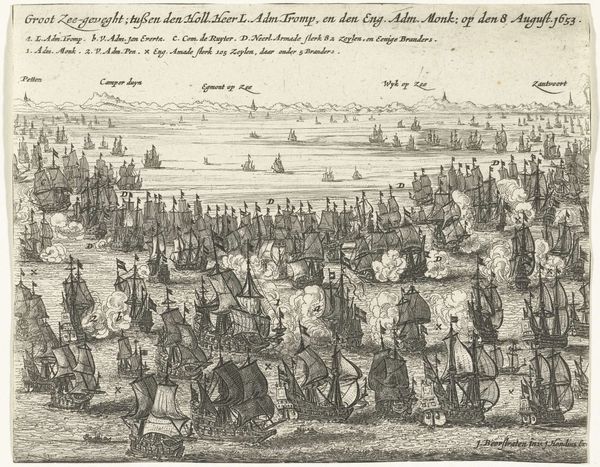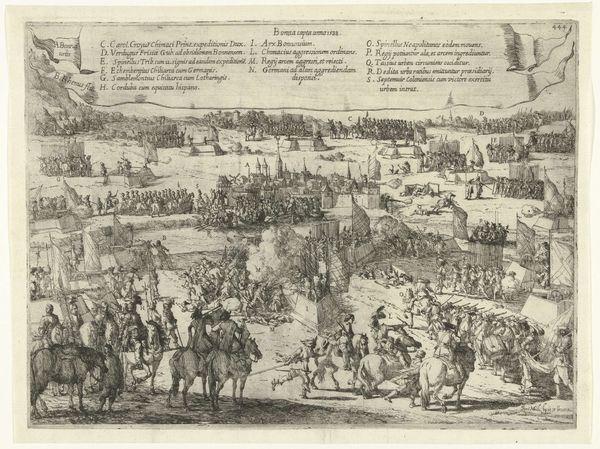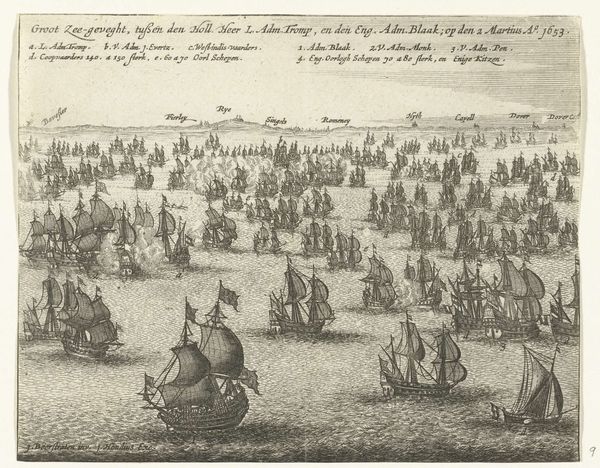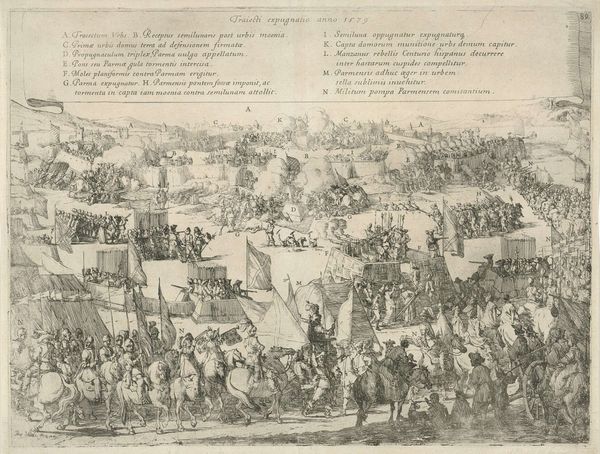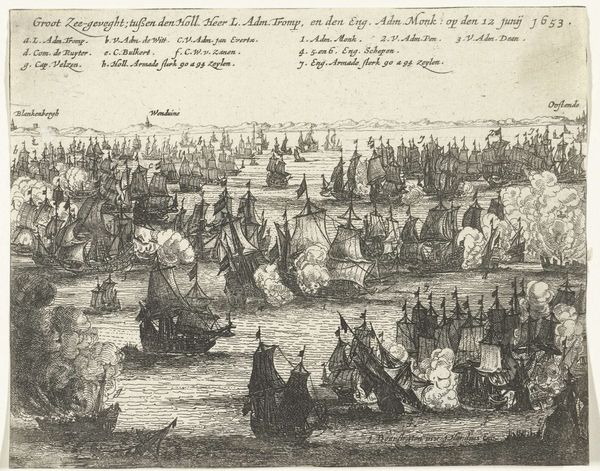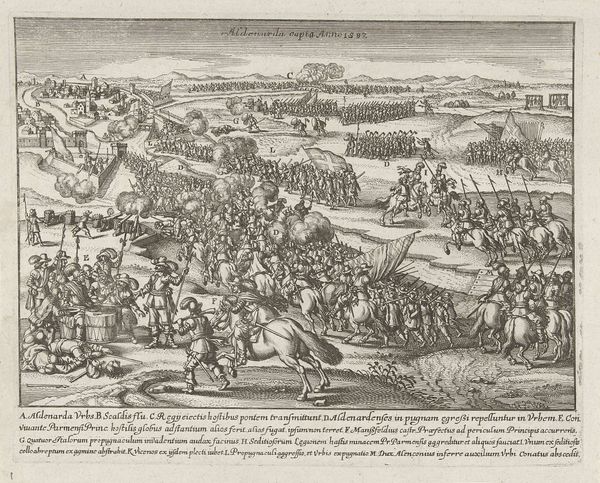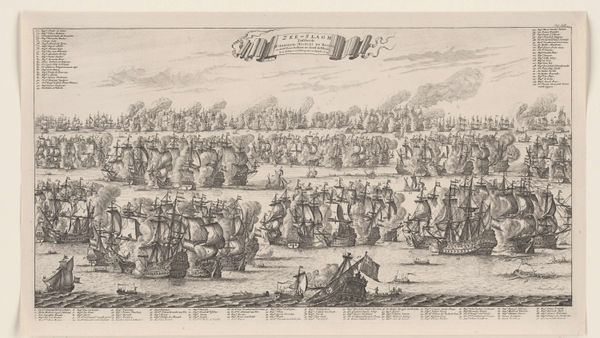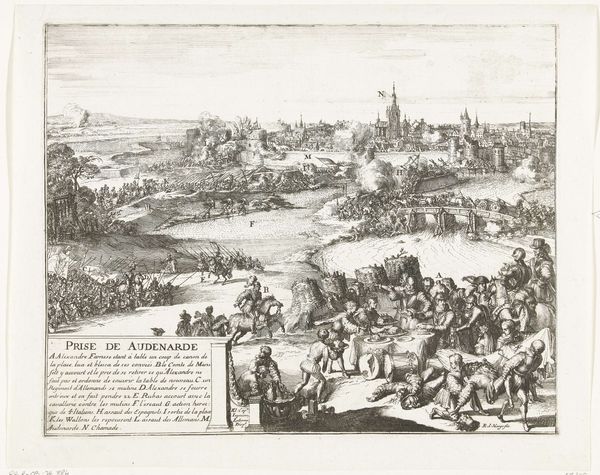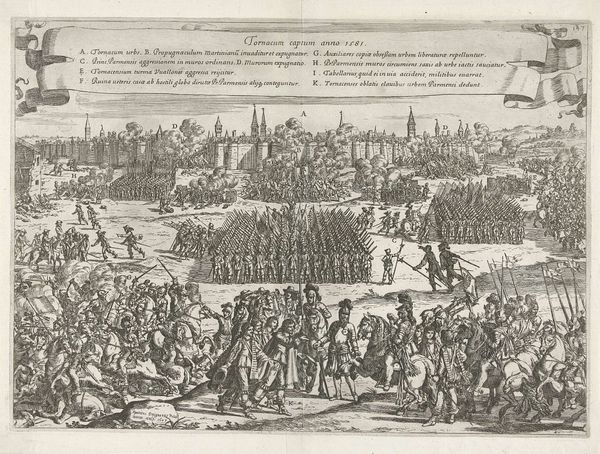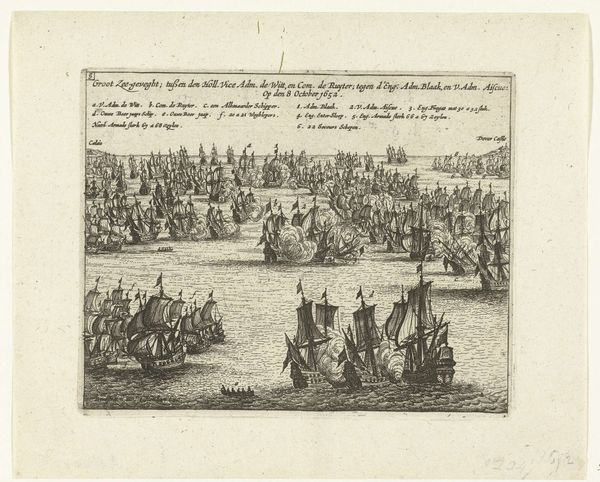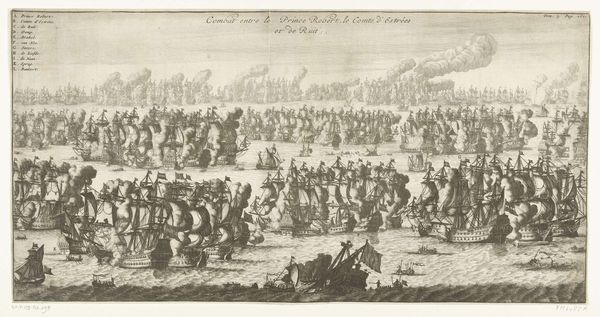
Zeeslag bij Nieuwpoort tussen de Staatse vloot onder Tromp en de Engelse vloot onder Monck, 1653 1654 - 1656
0:00
0:00
print, engraving
#
baroque
#
dutch-golden-age
# print
#
landscape
#
cityscape
#
history-painting
#
engraving
Dimensions: height 134 mm, width 170 mm
Copyright: Rijks Museum: Open Domain
Curator: This artwork presents a birds-eye perspective, a literal battleground teeming with tiny vessels amidst the billowing smoke of naval warfare. Editor: Indeed, it’s quite overwhelming, isn’t it? Such density conveys chaos, a real sense of urgency. But let's delve into its context. The piece, dating from between 1654 and 1656, depicts the "Sea Battle of Nieuwpoort between the Dutch fleet under Tromp and the English fleet under Monck, 1653." It's rendered as an engraving, a type of print. Curator: Right, the sociopolitical implications resonate so powerfully. Naval battles such as this were really about empires clashing, and the human cost of such political ambition is often downplayed. Do you see that also? Editor: Absolutely, this naval engagement clearly mirrors Anglo-Dutch rivalry, competing imperial aspirations during a critical period. Beyond the historical context, the piece showcases Dutch Golden Age and Baroque influences. There's the dynamic energy characteristic of Baroque, alongside a precision and a clarity of detail often seen in Dutch Golden Age art, a need to present factual data. Curator: Which might tell something about it being printed. The very act of creating a print suggests an intention for wide distribution, reaching beyond elite circles. How did images like this bolster national pride, or villainize the opponent, thereby solidifying identity and fueling further conflict? Editor: Print served to disseminate propagandistic and political ideas—shaping public understanding of conflicts, but one could also imagine it being presented alongside economic or demographic analyses. Images of battles would also have served as status statements of geopolitical affairs for the period and even today. Curator: Precisely! And even in terms of gender, how did they frame male identity around notions of conquest, control, and naval prowess? What roles, if any, were afforded to women in such depictions? It opens up so many lines of questioning on identity, race, and societal values in the historical frame and how that connects to what it still is today. Editor: Looking closer, I am struck by the intricate layering—smoke obscuring, partially revealing other boats. As we close, I recognize more deeply now that it operates on numerous levels—as document, historical narrative, and as a crafted representation intended to resonate with its specific socio-political moment. Curator: For me, viewing art is like excavating shared past. I want to question the accepted views in my efforts to construct meaning. The beauty is in that journey and not any final reading.
Comments
No comments
Be the first to comment and join the conversation on the ultimate creative platform.
